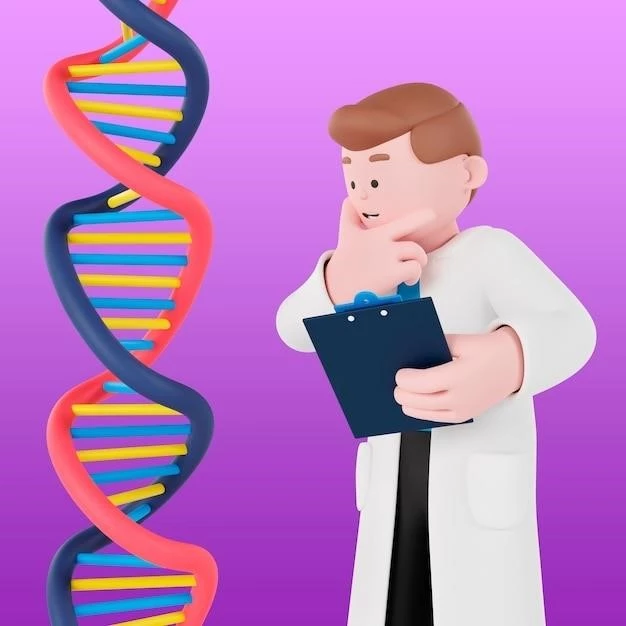Introduction to Properdin Deficiency
Properdin deficiency is a rare X-linked disease affecting the complement system․ Learn about its types, symptoms, and genetic basis․
Properdin deficiency is a rare X-linked disease affecting the complement system, leading to an increased susceptibility to Neisseria infections․ Understanding the genetic basis and clinical implications of this deficiency is crucial for proper diagnosis and management․
Types of Properdin Deficiency
Properdin deficiency is classified into three types⁚ Type I, Type II, and Type III, each with distinct genetic mutations and functional implications․ Understanding these types is crucial for proper diagnosis and management․
Type I Properdin Deficiency
Type I properdin deficiency is characterized by the total absence of the properdin protein in the plasma, leading to increased susceptibility to Neisseria infections․ Understanding the genetic mutations associated with this type is essential for diagnosis and treatment․
Type II Properdin Deficiency
Type II properdin deficiency is characterized by specific mutations leading to functional alterations in the properdin protein․ Understanding the distinct genetic changes associated with this type is crucial for diagnosis and personalized treatment strategies․
Type III Properdin Deficiency
Type III properdin deficiency is characterized by impaired binding of C3b and regulatory functions within the alternative pathway despite normal plasma levels of the properdin protein․ Understanding the unique functional abnormalities associated with this type is essential for targeted therapeutic interventions․
Definition and Overview
Properdin deficiency is a rare X-linked disease affecting the complement system, leading to an increased susceptibility to Neisseria infections․ Understanding the genetic basis and clinical implications of this deficiency is crucial for proper diagnosis and management․
Inheritance Pattern
The inheritance of properdin deficiency follows an X-linked pattern, where the defective gene causing the deficiency is located on the X chromosome․ Understanding this inheritance pattern is vital for assessing the risk of passing the condition from parent to offspring․
Mutations associated with properdin deficiency can vary, leading to different types of deficiencies with distinct clinical manifestations․ In-depth genetic analysis is essential for understanding the specific mutation causing the deficiency and its implications for diagnosis and management․
Clinical Presentation of Properdin Deficiency
Properdin deficiency can present clinically with a range of symptoms, such as increased susceptibility to Neisseria infections and the risk of meningococcal disease․ Understanding these manifestations is crucial for early detection and appropriate management․
Mutations Associated with Properdin Deficiency
Properdin deficiency is linked to specific mutations affecting the stability and functionality of the complement factor properdin․ Identifying these mutations through genetic analysis is crucial for understanding the pathophysiology and tailoring targeted treatment strategies․
Risk of Meningococcal Infection
Individuals with properdin deficiency are at an increased risk of contracting meningococcal infections, particularly those caused by Neisseria meningitidis; Understanding this heightened susceptibility is crucial for early recognition, prompt treatment, and preventive measures․
Diagnosis of Properdin Deficiency
Diagnosing properdin deficiency involves assessing the levels and functionality of the properdin protein, genetic testing, and considering the clinical manifestations․ Early detection is essential for effective management․
Laboratory Tests
Laboratory tests for diagnosing properdin deficiency include evaluating properdin levels in the plasma, genetic testing to identify specific mutations, and functional assessments to understand the impact of the deficiency on complement activation pathways․ These tests are essential for accurate diagnosis and management of the condition․
Differential Diagnosis
When considering the diagnosis of properdin deficiency, healthcare providers must differentiate it from other immunodeficiencies and complement disorders that present with similar symptoms․ It is important to conduct thorough evaluations to rule out other conditions and confirm the presence of properdin deficiency for precise management․
Management of Properdin Deficiency
Managing properdin deficiency involves treatment approaches aimed at preventing Neisseria infections, supplementing deficient proteins, and genetic counseling․ Effective management strategies can help individuals with properdin deficiency lead healthier lives․
Treatment Approaches
Treatment strategies for properdin deficiency may involve managing Neisseria infections through vaccinations, supplementing deficient proteins, and potentially gene therapies․ Prompt and appropriate interventions are crucial for improving outcomes and minimizing the risk of infections․
Importance of Genetic Counseling
Genetic counseling is vital for individuals with properdin deficiency to understand the inheritance pattern, assess the risk of passing the condition to offspring, and make informed decisions about family planning․ Consultation with a genetic counselor can provide valuable insights into the implications of the deficiency and facilitate proactive management strategies․

Research Studies on Properdin Deficiency
Research studies on properdin deficiency have identified genetic mutations associated with distinct deficiency types, such as Type I and Type II properdin deficiency․ Understanding these mutations is crucial for personalized treatment approaches and genetic counseling efforts․
Recent Findings
Recent studies on properdin deficiency have highlighted specific genetic mutations associated with different deficiency types, providing insights into the pathophysiology and potential targeted therapeutic strategies․ Understanding these recent findings is crucial for advancing the diagnosis and management of properdin deficiency․
Studies on Complement Activation Pathways
Recent studies have focused on unraveling the intricate interactions within the complement activation pathways affected by properdin deficiency․ Research has elucidated the role of properdin mutations in altering the stability of C3 convertases and the function of complement proteins٫ providing crucial insights into novel therapeutic targets and potential interventions․
Understanding the prognosis and potential complications of properdin deficiency is essential for comprehensive management and long-term health outcomes․ Proactive monitoring can help mitigate risks and improve quality of life․

Prognosis and Complications of Properdin Deficiency
Understanding the long-term outlook and potential complications of properdin deficiency is crucial for individuals and healthcare providers․ Proactive management and monitoring can help mitigate risks and ensure optimal health outcomes․
Potential Complications
Potential complications of properdin deficiency include increased susceptibility to meningococcal infections, which can lead to severe outcomes if not promptly treated․ Understanding these complications is essential for proactive management and preventive measures․
Preventive Measures for Properdin Deficiency
Properdin deficiency can be managed with vaccination strategies targeting Neisseria infections and infection control practices to minimize the risk of complications․ Heightened awareness and preventive measures are key to managing properdin deficiency effectively․
Vaccination Strategies
Implementing vaccination strategies targeting Neisseria infections is crucial for individuals with properdin deficiency to prevent serious complications․ Vaccines can help mitigate the risk of meningococcal infections and enhance overall immune protection against pathogens․
Infection Control Practices
Implementing infection control practices is crucial for individuals with properdin deficiency to minimize the risk of infections․ Measures such as good hygiene, avoiding close contact with sick individuals, and seeking prompt medical attention for any signs of infection can help prevent complications associated with properdin deficiency․
Impact of Properdin Deficiency on Immune Response
Properdin deficiency disrupts the complement system’s functioning, increasing susceptibility to Neisseria infections․ Understanding this impact on immune response is crucial for tailored treatment strategies․
Role of Properdin in Complement System
Understanding the critical role of properdin in the complement system is essential for comprehending how its deficiency affects immune responses against infections․ Properdin plays a crucial part in stabilizing the alternative pathway C3 and C5 convertases, emphasizing its significance in combating pathogens․
Immune System Implications
Properdin deficiency profoundly impacts the immune system by disrupting the complement cascade’s vital role in combating infections, especially those caused by Neisseria species․ Understanding the immune system implications of properdin deficiency is crucial for implementing targeted interventions and preventive measures to enhance immune defenses․
